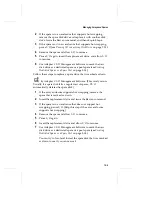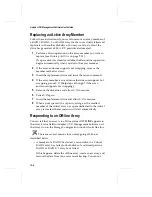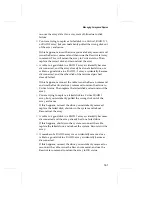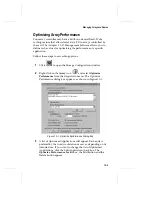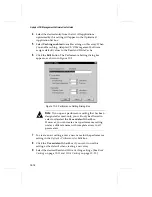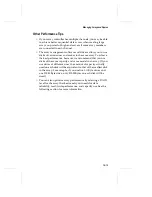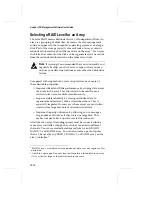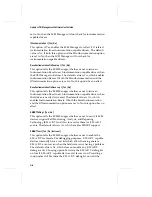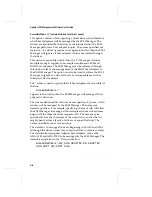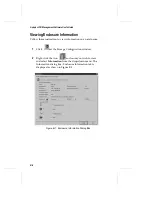
10-16
Adaptec CI/O Management Software User’s Guide
RAID 0/1 Arrays
Maximum Disks Allowed: 16 (or as allowed by your
controller)(must be an even number)
1
Minimum Disks Allowed: 4
RAID 0/1 disks use from two to eight pairs of disks. They are called
mirrored arrays because both disks in each pair contain the same
data. The read and write performance of a RAID 0/1 array is much
better than that of a single physical disk. RAID 0/1 arrays are highly
reliable; the array data remains safe so long as at least one disk of
each mirrored pair is good. Thus, in a 12-disk RAID 0/1 array, the
array could continue working with up to six failed disks if one disk
in each pair is still good. Because of the mirrored arrangement,
RAID 0/1 arrays require twice as many disks as the actual amount
of storage space.
RAID 5 Arrays
Maximum Disks Allowed: 16
2
(or as allowed by your controller)
Minimum Disks Allowed: 3
RAID 5 arrays contain redundant information in the form of parity
data, which is calculated block-by-block for all user data. The parity
data is distributed across all the disks in the array and occupies the
equivalent capacity of about one disk. User data is interspersed with
this parity data. If one disk in the array fails, its data can be
reconstructed from the user data and parity data on the other disks.
Two disks must fail before the entire array fails. The read
performance of RAID 5 arrays is excellent and is comparable to that
of a RAID 0 array. Write performance is slower than that of a RAID 0
array, because new parity data must also be calculated and written
when user data is written.
❒
1
The maximum would be 14 disks if the system has a single SCSI channel.
2
The maximum would be 15 disks if the system has a single SCSI channel.
Summary of Contents for 133U2
Page 1: ...USER S GUIDE ADAPTEC CI O MANAGEMENT SOFTWARE ...
Page 3: ...R AdaptecCI O Management Software User s Guide ...
Page 12: ......
Page 36: ......
Page 86: ......
Page 98: ......
Page 118: ......
Page 150: ......
Page 160: ......
Page 174: ......




